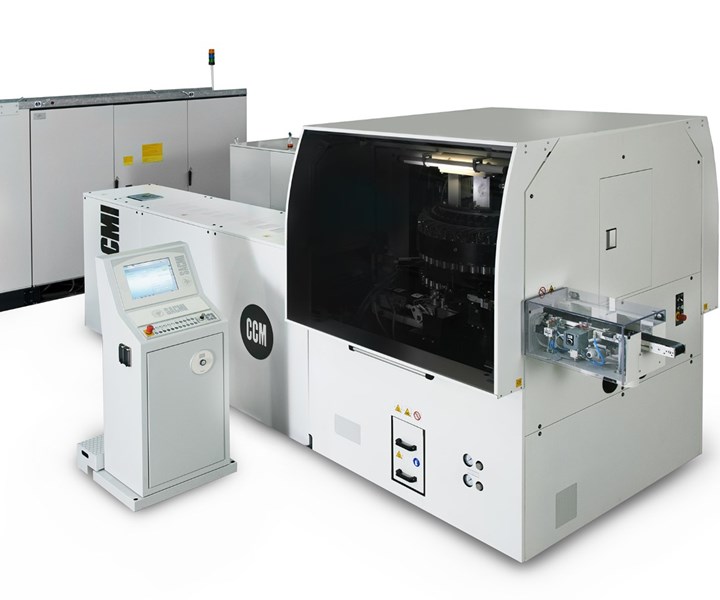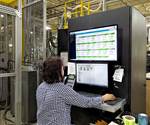Continuous Compression Molding Goes Multilayer
SACMI’s CCM system now can mold multilayer barrier containers such as coffee pods.
At last fall’s K 2019 show in Düsseldorf, SACMI of Italy presented a dramatic new capability for its continuous compression molding (CCM) system. This system, utilized up to now for high-speed production of caps and closures, is now moving farther into small containers such as single-serve coffee pods or capsules and tuna packages.

SACMI’s continuous compression molding system.
What makes this possible is new multilayer capability for these machines, designated CCMM. It involves coextruding a cylindrical “gob” with up to nine layers, which is sliced off the extrusion die, turned 90° and deposited in a compression mold on a continuously moving linear conveyor. Two machines are running coffee pods in Europe with two PP layers, one EVOH barrier layer, and two tie layers. A machine was also sold to Gateway Plastics in Mequon, Wis., for coffee pods. It has four extruders and can run up to 600 pods/min. The CCMM system is said to be capable of up to 800/min 32 cavities and accommodates products up 70 mm diam. and 50 mm high. CCM systems have been sold for monolayer coffee capsules that run at up to 1600/min. SACMI also offers a vision system for online 100% quality inspection that uses infrared light to measure layer thicknesses, especially that of the EVOH barrier.
Related Content
-
How to Optimize Injection Molding of PHA and PHA/PLA Blends
Here are processing guidelines aimed at both getting the PHA resin into the process without degrading it, and reducing residence time at melt temperatures.
-
Get Color Changes Right In Extrusion Blow Molding
Follow these best practices to minimize loss of time, material and labor during color changes in molding containers from bottles to jerrycans. The authors explore what this means for each step of the process, from raw-material infeed to handling and reprocessing tails and trim.
-
Medical Tubing: Use Simulation to Troubleshoot, Optimize Processing & Dies
Extrusion simulations can be useful in anticipating issues and running “what-if” scenarios to size extruders and design dies for extrusion projects. It should be used at early stages of any project to avoid trial and error and remaking tooling.













